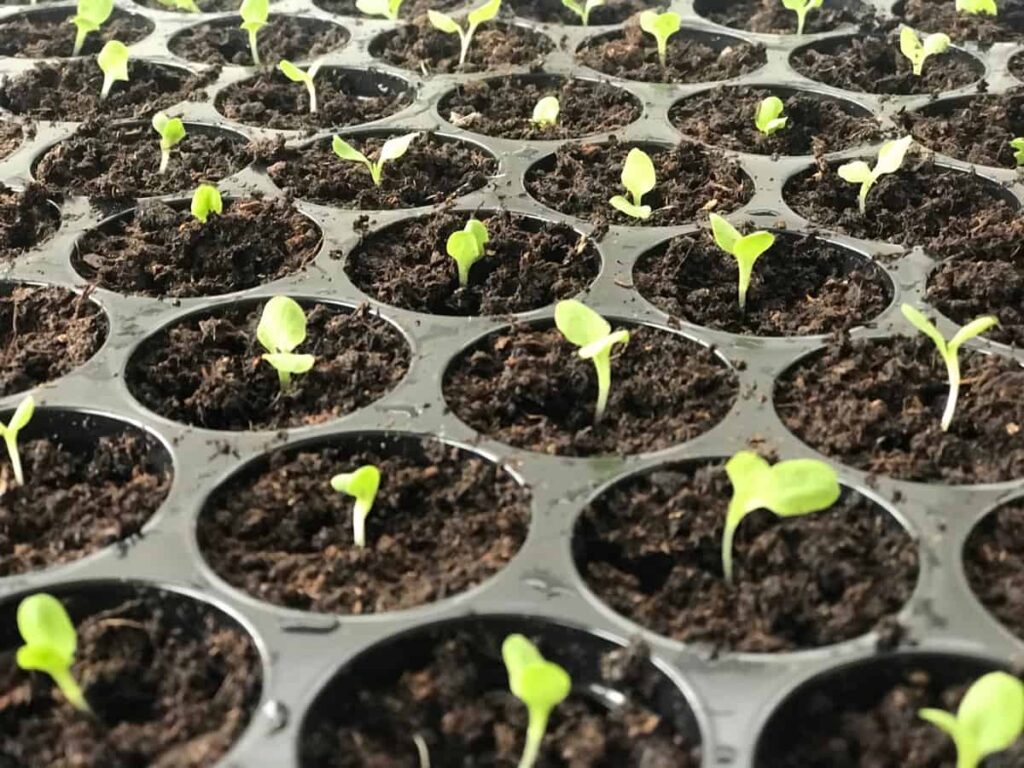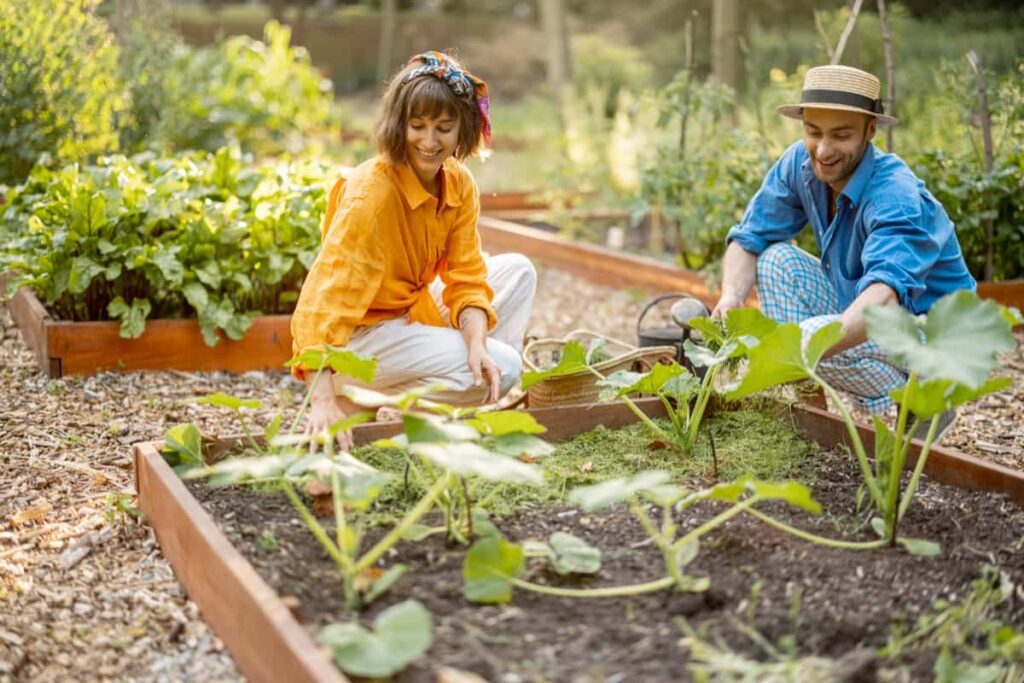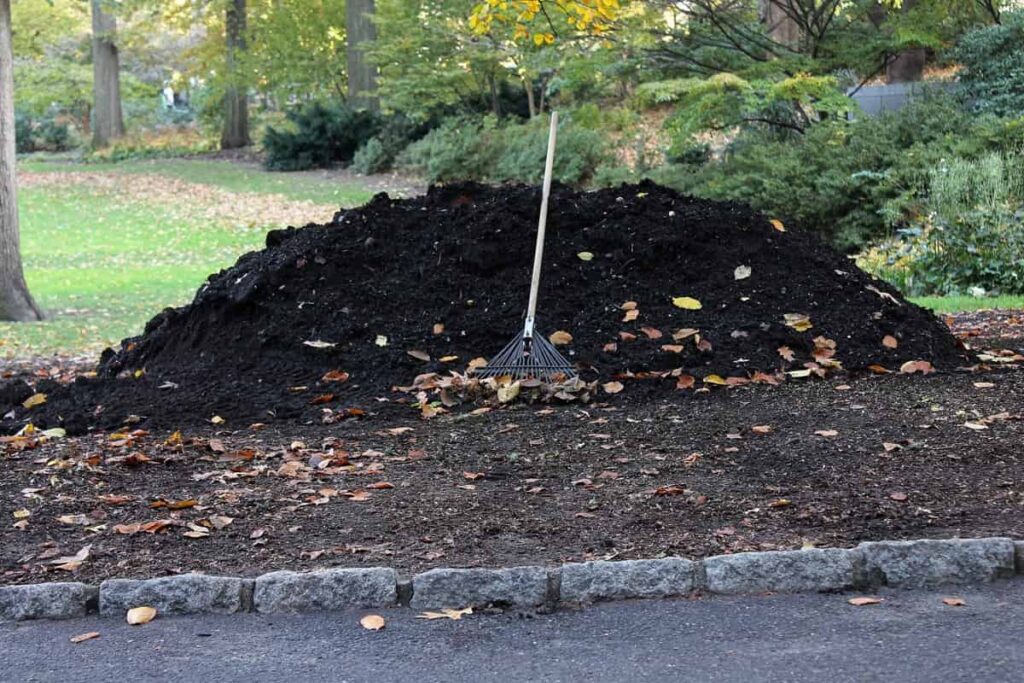You’ve been attempting to consume more organic foods to reduce your family’s pesticide exposure and help preserve the environment. However, a glance at your grocery shop bill reveals that purchasing organic may quickly become prohibitively costly. Fortunately, there is a method for growing your own delectable, fresh vegetables while also having fun and learning: organic gardening.
While you may pay someone to create and manage an organic garden for you, most of us can get our hands dirty with surprisingly little work. In this detailed blog post, you will learn to start an organic garden from scratch at home. The information provided here also applicable for Terrace, Backyard, Indoor, Pot/Container, and Raised Bed Organic gardening.
How to Start Organic Garden from Scratch at Home
What is Organic Gardening?
Most gardeners have yet to learn what organic gardening is or how to grow an organic garden. Organic gardening is cultivating plants without using manufactured chemicals such as fertilizers and insecticides. It entails growing plants in your yard only using natural ingredients. Organic farming contributes to the restoration of natural resources as it consumes them. Organic gardening views plants as a component of a wider natural system that starts with the soil and involves water supply, animals, insects, and humans.
Organic gardening entails naturally promoting the health of the overall gardening system. Everybody wants their food and surroundings to be safe and healthy. A competent organic gardener attempts to balance their actions and the natural environment, limiting exploitation and restoring all resources utilized by the garden.
It entails cooperating with natural systems, including the soil, water supply, humans, and even insects, with the ultimate goal of reducing damage to living and non-living objects in the natural environment while continuously restoring any resources used in gardening. Organic gardening foundations include cultivating an ecosystem that feeds and supports soil bacteria and plants while benefitting insects, rather than just sowing seeds and watching them develop.
Know Your Climate Zone
Organic farming is all about collaborating with the natural environment, not against it. This begins with an awareness of the crops most suited to your climatic zone and the appropriate planting season. Determine your zone and get aware of the fruits, flowers, herbs, and vegetables that are suitable.
Once you’ve determined your climatic zone, research the anticipated first and latest frost dates to determine the length of your planting season. When you visit your neighborhood garden shop, you may check for plants branded with the hardiness zone number corresponding to your location. If you’re purchasing seeds, compare the seed packet’s “days to maturity” to the duration of your planting season.
Prepare the Tools
Organic gardening is a simple operation that needs many of the same ingredients as regular gardening. Buy a rake and a hoe, seeds or seedlings if you still need them. Other related goods may assist your garden in reaching its full potential. A drip water system or soaker hoses help maintain regular and regulated temperatures and moisture levels in your garden, boosting the likelihood of a successful harvest. Without chemicals, floating row garden covers, neem, and horticultural oil may prevent especially persistent pests.
Check the pH and Drainage of the Soil
Purchase pH test strips from a gardening shop to determine the pH of your soil. Combine a handful of soil and lukewarm distilled water until a milkshake is reached, and then immerse the pH test strip. Maintain this position for 20-30 seconds, and then compare the strip to the key included with the test kit. For plants to grow, the pH of your soil must be between 5.5 and 7.0. If your soil is overly acidic (less than 5.5), add dolomite or quick lime and retest.
In case you missed it: How to Maintain the pH Levels of Hydroponic Systems: Increase, Decrease, and Stabilize

Whenever your soil is too alkaline (more than 7.0), add extra organic matter, such as peat moss or compost, and then retest it. Dig a hole of 1 foot x 1 foot broad in your garden. Fill the hole halfway with water and set it aside for 24 hours. Then, refill the hole with water and use a tape measure to determine how quickly the water descends. The optimal pace is two inches each hour.
Applying a few cups of compost or peat moss will aid in the drainage of both fast-draining and slow-draining soil. Wet the soil and take a handful to do a less scientific test. The soil should be cohesive yet crumble when pricked with a finger. Add extra organic matter to promote drainage if your soil does not retain its form or crumbles when pricked.
Choose the Ideal Location for Plants to Grow
Choose a bright area for your organic vegetable garden – preferably one that receives eight hours of sun daily. To photosynthesize, the majority of fruits and vegetables need an abundance of light and heat. If you only have partial sun, you can still produce certain vegetables and plants, such as lettuce, greens, and herbs. In an ideal world, your organic vegetable garden would be situated on a level, well-draining plot that is shielded from the wind by hedges, a windbreak, or walls.
Consider the practicality of access to water, tools, compost, upkeep, and harvesting. If it’s convenient to pop out and check on the crops regularly or quickly harvest something to add to your meals, it’ll be a practical and valuable addition to your organic garden. Be realistic about your capacity and the number of products you can consume. It’s essential to start modestly to avoid being discouraged and giving up. You can produce a lot of food in a little raised bed or pots.
Getting Rid of Weeds
Gardeners must plan on weeding practically every day. There are many methods for removing weeds. Removing weeds by hand is much simpler after watering. One approach is to gently squeeze the base of the stem while pulling the root out. Alternatively, use a weeding trowel to extract the root system. Additionally, you may scrape the top of the weed with a hoe, not harming any veggies.
In case you missed it: How to Start an Organic Farming in Andhra Pradesh: Crops, Weed Management, Nutrients, Pest, and Disease Management

Bear in mind that weeds might regrow if the root is not eliminated. Weeds can also attract various pests. Numerous insects transfer illness as they migrate from one eating site to another. The most organic method of controlling insects in your garden is manually plucking them off. If you are concerned, use gloves.
Deciding What to Grow
Determine which plants to cultivate based on the limits of your climatic zone and your preferences. Consider what fruits and veggies you like eating and grow them. Organic gardeners often surround their veggies with flowers and herbs to attract pollinators and other helpful insects. Additionally, examine your accessible area for home gardening. If you have limited space for a garden, it is prudent to avoid huge plants.
Raised Bed Preparation
Raised beds may be a realistic option if you want to produce crops in otherwise unfavorable settings or soil that has been degraded. They’re also quite popular with novices since they allow for some flexibility and inventiveness. If you plan to spend on a raised bed, remember that it may be built in whatever form you like.
To protect the bed from any pollutants, surround it with brick, stone, or even natural wood, and ensure that the border is at least 16 inches high to guarantee that your garden’s roots are protected. After that, you may begin filling the bed with compost and prepare the space for planting.
In case you missed it: Inexpensive Raised Bed Garden Ideas: Cheap Budget Tips and Techniques

Using Seeds or Seedlings
There are two primary techniques for establishing plants in the soil: direct seeding or transplanting infant seedlings. While growing plants from seed are often less expensive, it needs more patience, while transplanting offers satisfaction. Many home gardeners use a hybrid approach, growing some crops from seed and others from transplants purchased from a reputable organic garden shop.
In case you missed it: Cabbage Farming Business Plan: How to Grow from Seed to Harvest

Watering the Plants
Generally, the optimum time to water plants is in the morning. Mornings are often cooler with fewer breezes, which reduces the quantity of water lost to evaporation. When plants are watered in the evening, they remain moist overnight, leaving them more susceptible to fungal and bacterial illnesses. A drip water system works well, but if it costs a bit, you can gently pour a few drops of water at the base of the plants.
Most experts suggest that established plants need considerable, infrequent watering, often approximately one inch each week. To prevent stunning sensitive plants, use water close to or at the same temperature as the air; collected rainwater is ideal. One or two sprays each week stimulate deeper root development, which results in stronger plants.
Adding of Mulch
Weeds growth is controlled when the soil is covered with pebbles and organic waste and the ground is cold and damp. Worms and other helpful soil critters like mulch, which, like compost, decompose to provide fuel for the soil food chain. It is critical to match the appropriate kind of mulch to each crop. Mulch, perennial flowers, fruit trees, shrubs, and other large, long-lived plants flourish on wood chips. Vegetables that are delicate demand lighter mulch, such as straw or leaves.
In case you missed it: How to Make Your Own Neem Oil for Plants: Uses, Preparation Recipe at Home, and Steps of Extraction

Make Your Compost Pile
Compost is the most effective soil conditioner and slow-release plant nourishment available—yet it’s completely free to make! It is a micronutrient-dense soil amendment that promotes the development of helpful soil organisms, increases soil fertility, and enhances the structure of all soil types. Establish one today in a corner if your yard has no compost pile.
In case you missed it: 10 Best Reasons to Use Diatomaceous Earth in Your Garden: Benefits, Uses, and Composition

Follow the Crop Rotation Process
Crop rotation is the process of relocating your crops each year. It’s one of the simplest methods for preserving soil health and avoiding insect and disease problems. Growing the same crop in the same place year after year depletes the soil nutrients and may promote the spread of pests and illnesses.
Organic gardeners examine the edible portion of plants to determine their primary nutritional requirements and the plant’s family to minimize disease transmission. For instance, an organic gardener may grow tomatoes one year and carrots next year. Due to their distinct plant families, any illnesses or pests that may have harmed tomatoes are unlikely to be transferred to carrots.
Protect Your Plants from Pests Organically
Fostering natural predators in your yards, such as birds, lizards, frogs, and even bats, is beneficial—beneficial insects, particularly ladybugs, may be your greatest friends. If pests are attacking your garden, it might indicate other issues, so you first ensure that plants get enough light, nutrients, and moisture. Additionally, a diversified garden helps minimize pests by reducing the number of one plant species available to predators.
Numerous nurseries even offer cans, but they are unlikely to persist. Maintain a tiny water supply to attract beneficial predators. Additionally, cultivating plants with small blooms, such as sweet Alyssum and Dill attracts predatory insects and is a smart idea. Additionally, nets and row coverings may be used. Bacillus thuringiensis is an organic weapon that is a naturally occurring bacterium that impairs the digestion of caterpillars and other leaf-eating insects. Additionally, you may spray with garlic, insecticidal soaps, horticultural oils, or spicy peppers.
Harvesting Your Plants
It’s ideal for monitoring your garden daily throughout the peak harvest season. If you have any herbs on hand, pick them just before you need them if you utilize them fresh. However, to dry and store them, you should wait until just before flowering for the greatest taste. After the dew has evaporated, gather all other plants except basil. Basil is best harvested in the late afternoon when it has had more time to dry off.
If you’re collecting leafy greens, select a small amount from each plant and spread it around the field. Allow the center head of broccoli to grow as big as possible before sending out blooming buds. If you cut it off just above the leaf node, the remainder of the plant should produce more. Cutting fruit using a sharp knife or scissors is preferable to tearing it with your fingers, which may result in greater harm to the plant’s tissue.
Maintain Your Organic Garden Area Clean
Numerous diseases swiftly spread via dead, falling leaves. Therefore, go around your garden once a week and pick up shed leaves. Occasionally, pulling off an infected leaf may stop a disease from spreading across an entire plant. Dead or sick leaves should be discarded in the garbage, not added to your compost pile.
Try Companion Planting
Companion planting is a wide phrase that refers to the practice of growing diverse crops alongside one another for mutual benefit. Companion plants provide various beneficial services, like attracting pollinators, repelling pests, giving shade, supplementing the soil with nutrients, and reducing weeds.
- Broccoli Varieties: Choosing the Right Cultivars for Your Farm
- How to Raise Pigs in Your Own Backyard: A Comprehensive Guide
- Budget Friendly Sheep Shed Ideas: Cheap and Low-Cost Tips
- How Much Do Cattle Farmers Make: Revenue Streams in Cattle Farming
- Management Pests and Diseases in Your Cotton Field
- Sheep Farming Business Plan for Beginners
- Aquaponic Farming at Home: A Step-By-Step Guide
- Profitable Village Farming Business Ideas in 2024
- High-Yield Aquaculture: Fast-Growing Fish for Farming
- Effective Fish Pond Construction Techniques for Beginners
- Irrigation and Water Management in Pineapple Farming
- Blossom to Harvest: Mastering Flowering and Pollination in Papaya Farming
- Pig Fattening Essentials: From Selection to Sale for Beginners
- Raising Wagyu Cattle: A Complete Guide for Premium Beef Production
- Soil Types and Their Water Holding Capacity
- Optimizing Irrigation Schedules for Coconut Groves for Enhanced Yield
- Espresso Your Garden: Coffee Grounds for Healthier Acid-Loving Plants
- The Best Soil Mix for Snake Plants: How to Mix Your Own Snake Plant Soil
- Green Thumb Success: Expert Tips for Cultivating Greenhouse Beans All Year Round
- Bloom All Year Round: The Ultimate Guide to Indoor Hyacinth Care
- Eco-Friendly Gardening: How to Make Liquid Fertilizer from Kitchen Waste
- Ultimate Guide to Grow Anise in Pots: Explore Seed Propagation to Harvesting
- Guide to Raising Chester White Pigs: Discover Breed Facts to Growth Management
- Mastering the Elegance: The Ultimate Guide to Weeping Cherry Tree Care, Planting, and Maintenance
- Ultimate Guide to Planting Garlic in Grow Bags: Growing Strategies for Beginners
- How to Fix Spider Plant Leaf-Related Problems: Natural and Organic Remedies
- 10 Reasons Why Your Tulsi Plant is Shedding Leaves: Home Remedies and Solutions
- Optimizing Growth and Yield: The Advantages of Palm Bunch Ash Fertilizer
- Utilizing Neem Oil Extract as a Natural Pesticide for Hydrangea
- From Soil to Harvest: Various Ways in Which Farmers Can Use AI Tools
- Steps to Encourage and Induce Citrus Flowers: A Comprehensive Guide
- How to Fix Snake Plant Leaf-Related Issues: Natural and Organic Remedies
- Transform Your Garden into a Fragrant Oasis with Raat Ki Rani (Night Blooming Jasmine)
- Discover the Ideal Chicken Breeds for Philippine Farms
- How to Create a Poultry Egg Farm Business Plan for Profits
- Grow Lemon Cucumbers Like a Pro: Insider Techniques for Bountiful Yields
